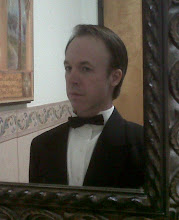Every screenplay needs a logline, a shorthand description of the story's premise.
When you're outlining a script or writing it, a clear logline reminds you what your story is and keeps you focused.
Later, the logline becomes a sales pitch, a meme, a kind of virus you hope will infect everyone who hears it, so they'll spread it to the next person, and the next, until it becomes a pandemic.
When a writer pitches a logline to an agent or producer, the immediate reaction should be: "Can I read it?"
When a producer pitches the logline to a studio or financier, they want to hear: "Can I write you a check?"
When a studio pitches the logline to the general public, they're counting on: "Two tickets, please. And a box of popcorn."
A logline needs to be brief, catchy, memorable.
It must imply a two-hour
movie in a one-line statement.
It should tell us
who,
what,
where, and when. Possibly
why and
how.
It should indicate genre and hint at tone.
It must tell us what the conflict is.
It should be familiar, yet different. Common, yet compelling.
How do you do all that in 25 words or less?
Boy, it's tough.
Trial and error. Prayer and meditation. Practice, practice, practice.
But when you've got it, it's gold.
For example, my logline for
Red Wedding is:
"A serial killer crashes a wedding at a remote lakeside resort."
Eleven simple words.
Who is the movie about? A serial killer.
What does he do? Crash a wedding.
Where does the story take place? A remote lakeside resort.
When? During a wedding. Presumably modern-day.
Why does he do this? (Watch and find out.)
How does he do it? (Well, that's the movie.)
Is the logline familiar?
Hell, yes. Overly familiar.
It sounds like a formula slasher movie. We've seen this kind of thing in
Friday the 13th and hundreds of other horror movies.
But that also means we know who the audience is: horror fans.
Is the logline also different?
Well, there is that wedding. I've seen lots of slasher movies, and I've seen lots of wedding movies, but have I seen a slasher at a wedding?
Maybe not.
Combining these two sub-genres does suggest some interesting possibilities. Weddings have lots of traditions that can be tweaked with a little blood and mayhem.
Most of us have been to a few weddings, possibly even our own. We know the tensions that weddings bring out. We remember the pressure, the fear that something might go wrong.
But what if
everything went wrong?
We also know who the characters are. A bride. A groom. Best man. Maid of honor. The priest. And, of course, the killer.
What's the conflict?
Serial killer vs. the wedding party.
Wedding jitters become wedding
terrors.
Hey, that's not bad. Maybe there's a movie there.
Finally, and most importantly, does the logline for
Red Wedding make you want to read the script or see the film?
God, I hope so.


